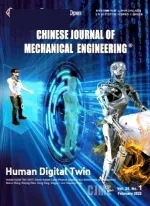Case-Based Reasoning(CBR)Model for Ultra-Fast Cooling in Plate Mill
2014-02-07HUXiaoWANGZhaodongandWANGGuodong
HU Xiao*,WANG Zhaodong,and WANG Guodong
State Key Laboratory of Rolling and Automation,Northeastern University,Shenyang 110819,China
1 Introduction*
As one component of thermo-mechanical control process(TMCP),controlled cooling technology is playing an important role in steel production.The new generation TMCP based on ultra-fast cooling(UFC)[1–2]is being widely adopted in plate mill to product high-performance steel material at low cost[3–5].Ultra-fast cooling process is presented in Fig.1.In the traditional process model,ultrafast cooling system is complex because of optimizing the temperature control error generated by heat transfer mathematical model and process parameters.Thus,in order to simplify the model and improve the temperature control precision,a new method needs to be introduced to optimize or replace the ultra-fast cooling process model.

Fig.1 Process arrangement diagram of ultra-fast cooling equipment
Case-based reasoning(CBR)system,a variant of expert system,is a recent approach in problem solving and learning,and has received great deal of attention in the last few years.The goal of CBR is to infer a solution for current problem description in a special domain from previously solved problems.The core of CBR is‘‘similar problems have similar solutions’’.The basic idea behind CBR is that reasoning and problem-solving are based on the specific experiences instead of general abstract knowledge or rules.It provides a new method for building intelligent systems[6].AAMODT,et al[7],introduced a process model of CBR cycle.This model is commonly called R4model of CBR,because this model process can be represented by a schematic cycle.Based on R4model,FINNIE,et al[8],proposed R5model which is shown in Fig.2.Repartition,retrieve,reuse,revise and retain are the main process steps of CBR.Repartition here is used to form a satisfactory case base based on partitioning WP(possible world of problems)and WS(possible world of solutions)as discussed.Furthermore,repartition provides the theoretical foundation for case retrieval,because of one-to-one correspondence between the partition of WPand the similarity relations on WS.Case base building and case retrieval[9]can be treated as a similarity-based reasoning in a unified way.Casebased reasoning technique has an ability to utilize the specific knowledge of domain called“case”[10]which was previously addressed to concrete problem situations.New problem is solved by finding a similar case and reusing it in the new problem solution.Practically,this system simulates how humans reason from past experience.It creates a solution for the current problem by either modifying an existing solution or creating a new solution according to the experienced problem situation.In recent work[11–15],Some of the applications where the CBR system plays a major role are diagnostics,design,decision support,prediction,and classification.
The main idea of ultra-fast cooling process is as follows:
(1)Hardened austenite is obtained through continuous deformation and strain accumulation in the austenite region;
(2)Ultra-fast cooling technology is applied immediately after the rolling process;
(3)Cooling process is stopped at the transformation point between austenite and ferrite;
(4)Controlled cooling strategy is established based on the desired microstructure and mechanical properties.
In the ultra-fast cooling process,similar steel plates are manufactured according to the batch.Additionally,casebased reasoning solves new problems by adapting previously successful solutions to similar problems.Thus,CBR is attracting attention in ultra-fast cooling process because it addresses new problem by similar problems.
CBR systems were developed by various researchers for different application areas[16–21].But the application of CBR model in predicting ultra-fast cooling strategy has not been introduced.Thus,case-based reasoning prediction model is developed to replace ultra-fast cooling process model and predict cooling strategy in this research work.The relationship between CBR model and traditional process model is presented in Fig.3.Case representation,case similarity relation,and case retrieval algorithm of casebased reasoning R5model were improved according to the characteristic of ultra-fast cooling process.Different steel plates of material namely 12MnNiVR are considered for experimentation.Validation experiments are conducted to check the capability of CBR model.

Fig.3 Relationship between case-based reasoning model and traditional process model
2 Development of Case-Based Reasoning Model
CBR system mainly comprises case representation,case retrieval,case reuse,case revision,and case retain module.CBR system should be able to retrieve several existing cases from the case base,reuse the case or modify the solution of retrieved case when the new case comes,and retain the newly generated solutions in the case base.The function of case retrieval module is to extract the similar case from case base that resembles the new case most closely.The retrieved case is referred as the most similar case.Reuse module is to calculate similarity relation on the basis of distance between the similar case and the new case.Revise module is to decide the most similar case according to the similarity relation.
The computational process of CBR model for ultra-fast cooling process is shown in Fig.4.First,several similar plate cases are retrieved from plate case base when new plate case is coming.At the same time,the similarity relation of each similar case is calculated against the new plate case.Then,the most similar plate case is decided by certainty factor and used to ultra-fast cooling equipment.Finally,cooling result is stored as previous case in plate case base by clustering algorithm.
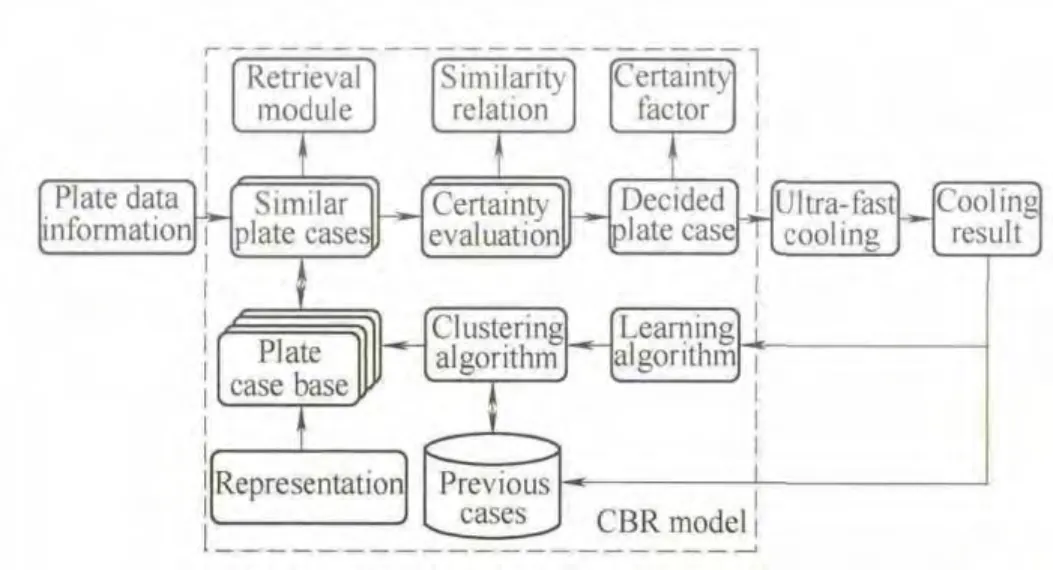
Fig.4 CBR model of ultra-fast cooling process
2.1 Case representation
Knowledge and experience is not independent but combinative between each other.In the CBR system,the representation of plate cases is important.In many practical CBR application systems,cases are defined as a pair attribute-value which usually represents the problem and solution features.In the ultra-fast cooling process,a case is the representation of plate cooling experience which is comprised of cooling target and cooling strategy.The collection of plate cases is called a case base which can be described in terms of cooling target and cooling strategy space.In this paper,every plate case is named semantics memory unit(SMU).Semantics memory unit indicates formation of one case which is defined as follows:
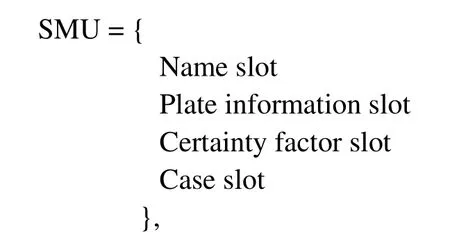
where Name slot means the name of plate case;Plate information slot contains thickness,cooling rate,and temperature drop of plate;Certainty factor slot illustrates the reliability of internal and external data for ultra-fast cooling system;Case slot expresses the cooling strategy of plate case.
Definition 1.Certainty factor(CF)illustrates the reliability of case data and it is defined as follows:

where CIpis reliability of internal data,such as detecting data or processing data of ultra-fast cooling process;CEqis reliability of external data,such as plate shape or performance evaluating value which is inputted artificially by ultra-fast cooling system interface.
2.2 Case similarity relation
In CBR systems,quality of the results mainly depends on the similarity measures which are used to retrieve similar cases.Matching is the process of comparing two cases with each other and determining their degree of case similarity relation[22].During the retrieval procedure of ultra-fast cooling process,current plate cooling information is matched against the plate cases stored in the case base.Finally,several similar plate cases are obtained and similarity relation is also determined.
For n-dimensional vectors case x=(x1,x2,…,xn)and y=(y1,y2,…,yn),distance function is determined as Euclidean distance which is calculated as follows:

In the ultra-fast cooling process,d(x,y)is Euclidean distance between two similar plate cases.Each plate case is declared as 3-dimensional vectors case x=(x1,x2,x3),where x1is thickness,x2is cooling rate and x3is temperature drop.
The concept of similarity is opposite to the definition of distance.Similarity relation measurement based on Euclidean distance is usually converted by monotonic decreasing membership function.The value of similarity ranges from 0 to 1.In this way,similarity relation can be expressed between matched plate case and new plate case in ultra-fast cooling process.There are several similarity membership functions to calculate the corresponding similarity degree between two compared cases.
Partial similarity membership function for two corresponding cases x and y is defined as follows:

where d(x,y)is the distance function and the value of distance ranges from 0 to 1.
Because of clustering pattern for ultra-fast cooling system,the value of distance is always equal to or greater than 1.Therefore,partial similarity cited above is not suitable for ultra-fast cooling system.
Negative index similarity membership function for two corresponding cases x and y is defined as

where d(x,y)is the distance function,β is gain factor.
Reciprocal similarity membership function for two corresponding cases x and y is defined as

where d(x,y)is the distance function,β is gain factor.
As mentioned above,there is a common characteristic of negative index similarity membership function and reciprocal similarity membership function,which is similarity relation of closer distance cases changes greatly and farther distance cases changes slowly.In the ultra-fast cooling process,it can cause the number of similarity cases decreasing sharply and lead to the failure of cases reuse.Family curves of these two similarity membership functions are presented in Fig.5 and Fig.6,respectively.For solving the problem of retrieval failure and improving reuse success probability of similar cases,a similarity membership function is proposed in the ultra-fast cooling process.
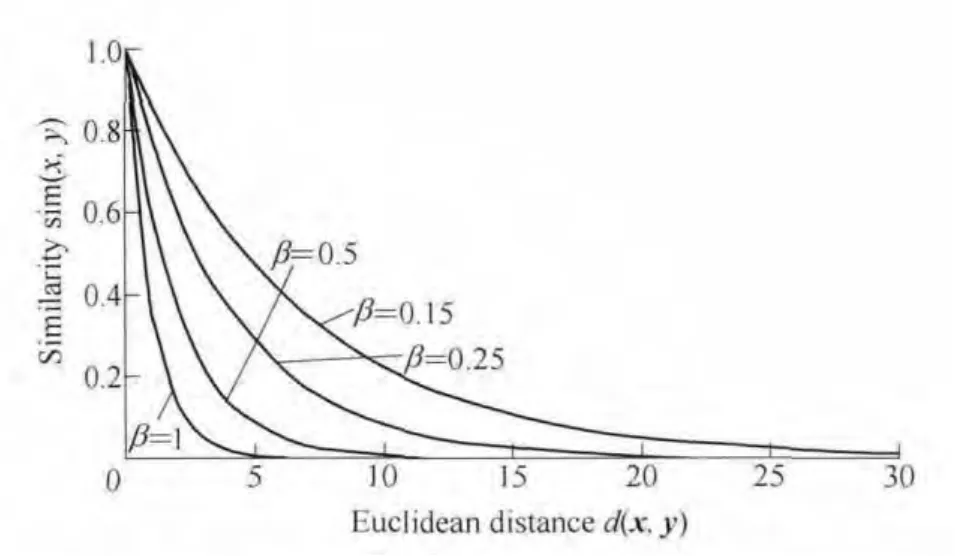
Fig.5.Negative index similarity membership function
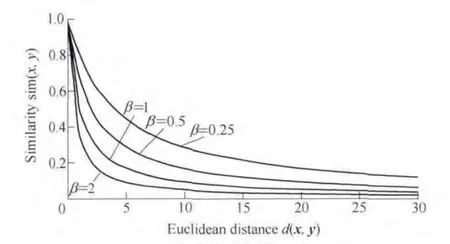
Fig.6.Reciprocal similarity membership function
Definition 2.Negative power index similarity membership function for two corresponding cases x and y is defined as follows:

where d(x,y)is the distance function,β is the gain factor,β>0,membership function family curves are shown in Fig.7.

Fig.7.Negative power index similarity membership function
2.3 Case retrieval module
Nowadays,the capability of database technology to store gigantic records allows CBR to have a huge number of cases in case base.Because of the big cases,many researchers have been taking study on case retrieval.They are mainly committed to the case indexing technique for more integrated retrieval space and faster retrieval time[23].Just for the case base of ultra-fast cooling process,retrieval module should be matched with case representation and clustering algorithm.Meanwhile,it is essential to guarantee that retrieval process is simple and similar cases are not neglected.Therefore,one retrieval module should be selected or developed so as to adapt for ultra-fast cooling process efficiently.
The fundamental idea of CBR is problem solving based on the retrieval of similar cases.In its simplest form,this is nearest neighbor classification.There has been considerable research on alternatives to the exhaustive search strategy.The most common technique for similarity retrieval in CBR is the k-nearest neighbor(k-NN)[24].Here is a summary of several strategies for speeding up the nearest neighbor retrieval.
Case retrieval nets(CRNs)preprocesses the cases to form a network structure which is used at retrieval time.The retrieval process is finished by spreading activation in this network structure.CRNs can be configured to return exactly[25].However,CRNs depend on a feature-based case representation.
Cover trees for nearest neighbor uses a data structure called a cover tree to organize the cases for efficient retrieval.The use of cover trees requires that the distance measure is a true metric,however,they have attractive characteristics in terms of space requirements and speedup performance[26].
Footprint-based retrieval involves a preprocessing stage to organize the training data into a two-level hierarchy on which a two-stage retrieval process operates.This retrieval process is not guaranteed to retrieve,but the evaluation results of speedup and retrieval quality are nevertheless impressive.
k-NN is not an efficient method to minimize retrieval time particularly at case similarity retrieval.It is suggested that indexing technique which is commonly used in database application can help to speed up the retrieval and optimize accessibility of data.Indexing is a technique used to speed up access of stored data.By storing the data in the right way,it helps the system to find items or elements without scanning the entire data set.
According to the above,in order to take more aspects of consideration into CBR,such as case representation feature,clustering space distance measure,speedup,and retrieval quality,a retrieval module is suggested in this paper.Because the appearance illustrated in Fig.8 is similar to windmill for 2-dimensional vectors case,the suggested retrieval module is named as windmill retrieval(WR)algorithm.
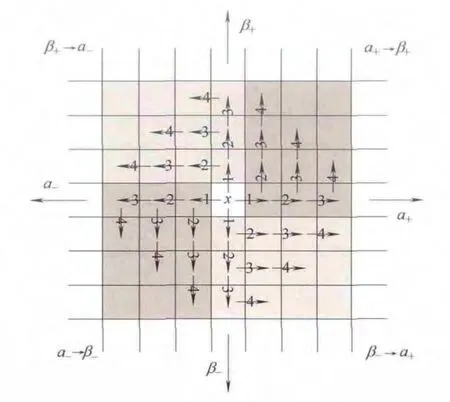
Fig.8.2-dimensional vectors case appearance of windmill retrieval algorithm
Definition 3.The mechanism of windmill retrieval algorithm is described as follows.
(1)For n-dimensional vectors case x=(x1,x2,…,xn),increasing direction xk+and decreasing direction xk-are called axes.So target similar case of case-centered is divided into 2npartitions by 2×n axes.Every partition is named a wing which is provided with retrieval direction.
(2)With the purpose of simplifying measure process which is compared with Euclidean distance,retrieval distance is selected as Manhattan distance which is indicated as

For instance,as illustrated in Fig.7,similar case of 2-dimensional vectors target case x=(α,)β is divided into 4 wings such asby axis α+,α-,β+,β-.In the same way,similar case of 3-dimensional vectors target case x=(α,β,γ)is divided into 8 wings such asby axis α+,α-,β+,β-,γ+,γ-.Retrieval direction of each wing includes dominant direction(axis direction)and auxiliary direction(paralleling to else axes).Hence,the retrieval completeness and quality could be guaranteed by definite index directionality.At the same time,because Manhattan distance is adopted,measure process will be simplified and retrieval speed would be promoted obviously.In this way,according to the windmill retrieval algorithm,several similar plate cases are retrieved from ultra-fast cooling case base.Combining with similarity relation and certainty factor,the most similar case will be selected as decided plate case.
3 Validation Experimentation
Furthermore,the purposed CBR model is applied in industrial production.In order to examine the capability of developed CBR model,validation experiments were conducted.Developed CBR model could be applied to each steel grade produced by ultra-fast cooling process.In the validation experiments,steel grade was selected as 12MnNiVR.Meanwhile,10 groups of steel plate information(input target case)parameters were selected randomly which is shown in the plate information slot of Table 1.The experimental input target cases were applied to the CBR model and the predicted results were recorded.In the condition of ensuring temperature precision and distribution uniformity,both the experimental plate information and predicted cooling strategy(output decided case)of ultra-fast cooling process are shown in Table 1.SMU name is the new plate case waiting for solving.Plate information slot is the input data of the new case including plate thickness,cooling rate,and temperature drop.Certainty factor slot is process parameters,which includes reliability of system internal data and external evaluating data,and the similarity relation between decided case and the new case.Case slot is the output result of CBR model including cooling strategy,which is the solution of the new plate case for ultra-fast cooling process.
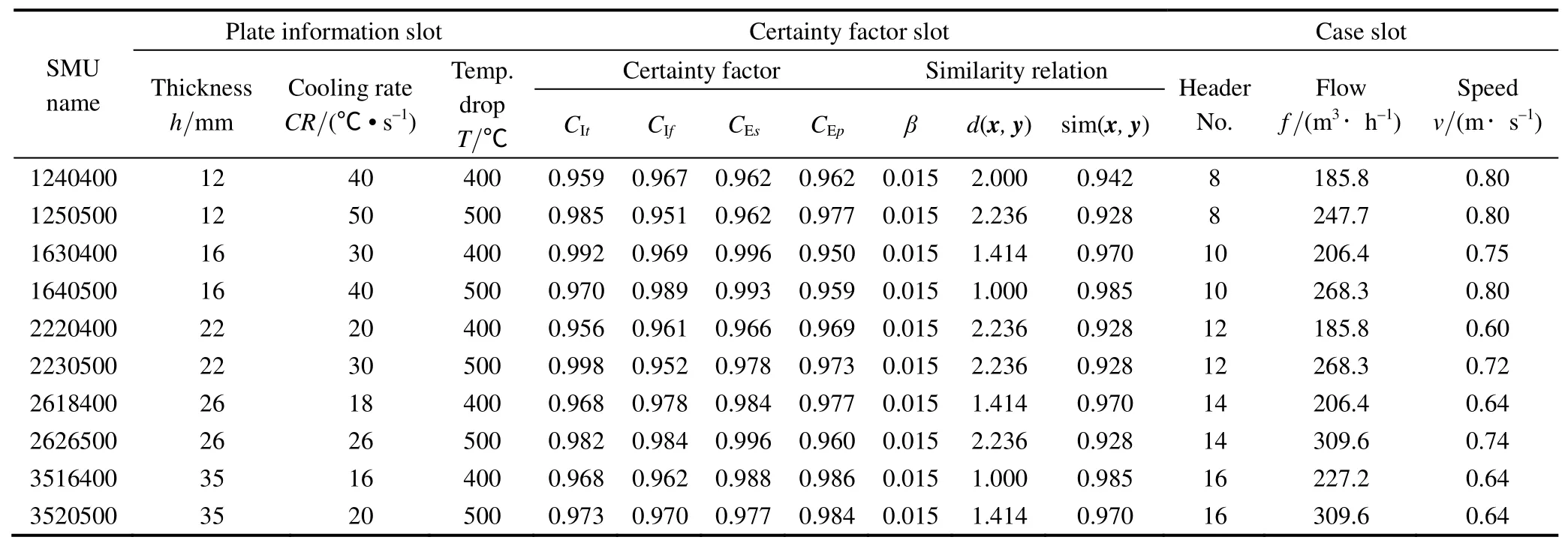
Table 1.Experimental plate information and predicted responses of developed case-based reasoning model(steel grade:12MnNiVR)
Take one group input target case of experimental plate for example.According to WR algorithm defined above,several similar plate cases were retrieved by plate thickness,cooling rate and temperature drop from ultra-fast cooling case base.At the same time,every case will be reused in order to choose the most similar one.In this validation experimentation,certainty factor(CF)includes four parameters,where CItand CIfare temperature and water flow reliability of system internal data,CEsand CEpare plate shape and performance reliability of external evaluating data.Euclidean distance d(x,y)between similar case and target case can be confirmed by Eq.(2).Adopting gain factor β which is placed in similar case,case similarity relation sim(x,y)can be calculated by Eq.(6).Based on CF and sim(x,y),case similarity of each similar case will be compared one by one and the most similar one will be selected as decided case.Finally,cooling strategy of target case plate can be obtained.
4 Results and Discussion
Currently,the developed CBR model based on ultra-fast cooling process has been used in traditional plant mill production line successfully.A series of industrial productions were conducted.The field practice shows that the control precision of CBR model is higher than the traditional ultra-fast cooling process model at the same rolling condition.Start cooling temperature(SCT)error of ultra-fast cooling is±20℃,finish cooling temperature(FCT)error is±25℃ based on CBR model and±28℃ based on traditional process model.At the same time,quality rate of the product is more than 97%.In the experimental steel grade 12MnNiVR(12mm thickness),one group practical measuring data is presented in Fig.9.
The mechanical properties of experimental steels are improved when the phase transition of austenite reaches to a middle low temperature after adopting ultra-fast cooling technology.As shown in Table 2,the mechanical properties based on case-based reasoning model are satisfied for industrial production.In addition,because the FCT control precision of CBR model is higher than traditional process model,the uniformity of mechanical properties is superior along the length direction of steel plate.
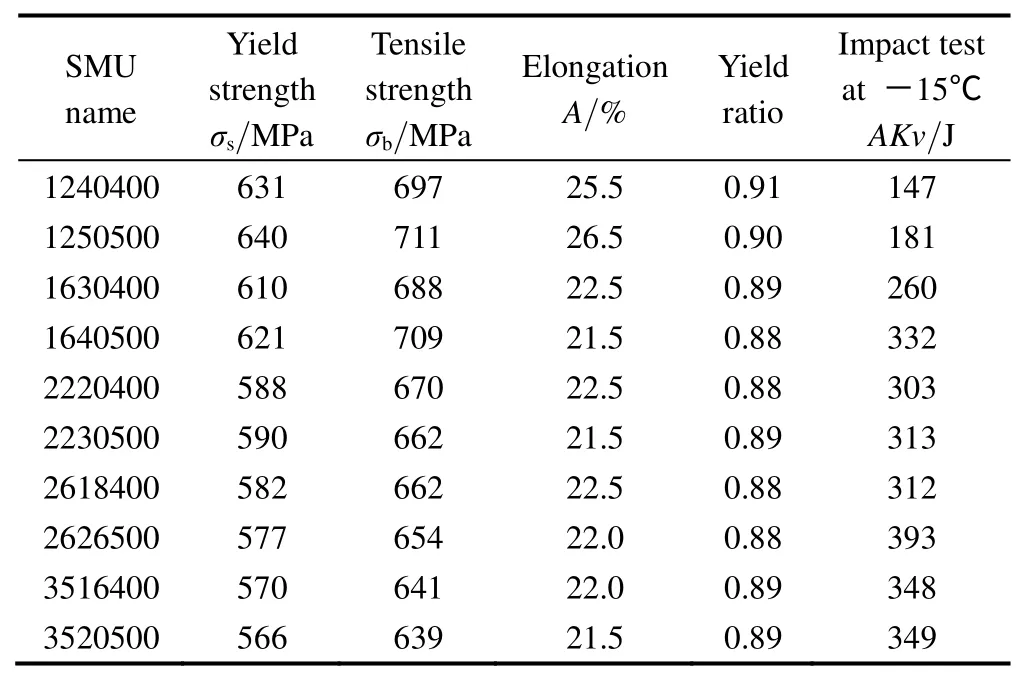
Table 2.Mechanical properties of experimental observations(steel grade:12MnNiVR)
Based on case-based reasoning model of ultra-fast cooling process,All the microstructure of experimental steel are ideal under different cooling rates process(50℃,30℃,16℃,5℃)which are presented in Fig.10.Thus,mechanical property of plate is also guaranteed by uniform microstructure.
According to the developed CBR model for ultra-fast cooling process in steel production,it reached high precision temperature control,satisfactory product yield,improved mechanical property,and ideal microstructure.
5 Conclusions
(1)A developed CBR model is proposed for predicting ultra-fast cooling strategy.It mainly improves the case representation,similarity relation,and retrieval module.
(2)Developed CBR model defines certainty factor in semantics memory unit.It provides not only internal data reliability but also external product performance.Thus,model parameters are optimized and expected product performance is guaranteed.
(3)Similarity relation reliability is improved by defined power index similarity membership function.Furthermore,compared with previous membership function,closer distance cases are more believable and the effect of farther distance cases is decreased.
(4)Windmill retrieval algorithm searches cases gradually and directionally from the near to the distant.Comprehensiveness and non-repeatability is ensured.In addition,retrieval distance is selected as Manhattan distance rather than Euclidean distance.Measure process is simplified and retrieval efficiency is improved apparently.
(5)The validation experiment and industrial production of CBR model is carried out,which demonstrated that finish cooling temperature error is controlled within±25℃and quality rate of product is more than 97%.The proposed CBR model can simplify ultra-fast cooling system and give quality performance for steel product.

Fig.10.Microstructure treated by different cooling rates of experimental material 12MnNiVR(12 mm)
[1]WANG Guodong.The new generation TMCP with the key technology of ultra fast cooling[J].Shanghai Metals,2008,30(2):1–5.(in Chinese)
[2]WANG Guodong.New generation TMCP and innovative hot rolling process[J].Journal of Northeastern University(Natural Science),2009,30(7):913–922.(in Chinese)
[3]TANG S,LIU Z Y,WANG G D,et al.Microstructural evolution and mechanical properties of high strength microalloyed steels:ultra fast cooling(UFC)versus accelerated cooling(ACC)[J].Materials Science and Engineering:A,2013,580:257–265.
[4]WANG B,LIU Z Y,ZHOU X G,et al.Precipitation behavior of nanoscale cementite in 0.17% carbon steel during ultra fast cooling(UFC)and thermomechanical treatment(TMT)[J].Materials Science and Engineering:A,2013,588:167–174.
[5]CHEN Jun,LU˙˙ Mengyang,TANG Shuai,et al.Influence of cooling paths on microstructural characteristics and precipitation behaviors in a low carbon V–Ti microalloyed steel[J].Materials Science and Engineering:A,2014,594:389–393.
[6]CHEN Daqing,BURRELL P.Case-based reasoning system and artificial neural networks:a review[J].Neural Computing &Applications,2001,10(3):264–276.
[7]AAMODT A,PLAZA E.Case-based reasoning:foundational issues,methodological variations,and system approaches[J].Artificial Intelligence Communications,1994,7(1):39–59.
[8]FINNIE G,SUN Zhaohao.R5model for case-based reasoning[J].Knowledge-Based Systems,2003,16(1):59–65.
[9]SUN Zhaohao,FINNIE G,WEBER K.Case base building with similarity relations[J].Information Sciences,2004,165(1):21–43.
[10]HE Wu,XU Lida.Integrating both Wikis and XML with case bases to facilitate case base development and maintenance[J].Expert Systems with Applications,2011,38(7):8632–8638.
[11]XU T,WADE N S,DAVIDSON E M,et al.Case-based reasoning for coordinated voltage control on distribution networks[J].Electric Power Systems Research,2011,81(12):2088–2098.
[12]XU Man,YU Haiyan,SHEN Jiang.New algorithm for CBR-RBR fusion with robust thresholds[J].Chinese Journal of Mechanical Engineering,2012,25(6):1255–1263.
[13]PEREIRA I,MADUREIRA A.Self-optimization module for scheduling using case-based reasoning[J].Applied Soft Computing Journal,2013,13(3):1419–1422.
[14]YEOW W L,MAHMUD R,RAJ R G.An application of case-based reasoning with machine learning for forensic autopsy[J].Expert Systems with Applications,2014,41(7):3497–3505.
[15]HORSMAN G,LAING C,VICKERS P.A case-based reasoning method for locating evidence during digital forensic device triage[J].Decision Support Systems,2014,61:69–78.
[16]ANTHONY M X,MARGRET S A.Case-based reasoning(CBR)model for hard machining process[J].International Journal of Advanced Manufacturing Technology,2012,61(9):1269–1275.
[17]XING Guishan,DING Jinliang,CHAI Tianyou,et al.Hybrid intelligent parameter estimation based on grey case-based reasoning for laminar cooling process[J].Engineering Applications of Artificial Intelligence,2012,25(2):418–429.
[18]DAVID M.Conversational case-based reasoning in medical decision making[J].Artificial Intelligence in Medicine,2011,52(2):59–66.
[19]MARIA S,MAITE L S.Adaptive case-based reasoning using retention and forgetting strategies[J].Knowledge-Based Systems,2011,24(2):230–247.
[20]ZHOU Ming,CHEN Zhimin,HE Wenjing,et al.Representing and matching simulation cases:A case-based reasoning approach[J].Computers and Industrial Engineering,2010,59(1):115–125.
[21]FANG Fang,WONG T N.Applying hybrid case-based reasoning in agent-based negotiations for supply chain management[J].Expert Systems with Applications,2010,37(12):8322–8332.
[22]MORTEZA B,ABBAS S,RASSOUL N.A case-based reasoning system development for statistical process control:vase representation and retrieval[J].Computers and Industrial Engineering,2012,63(4):1107–1117.
[23]MOHSIN M F M,NORWAWI N M,MANAF M B,et al.The development of hashing indexing technique in case retrieval[C]//Proceedings of the Information Technology,Kuala Lumpur,June15–17,2010:1045–1050.
[24]CUNNINGHAM P.A taxonomy of similarity mechanisms for case-based reasoning[J].IEEE Transactions on Knowledge and Data Engineering,2009,21(11):1532–1543.
[25]LENZ M,BURKHARD H D,BRUCKNER S.Applying case retrieval nets to diagnostic tasks in technical domains[C]//Proceedings of the Third European Workshop on Case-Based Reasoning,Lausanne,November 14–16,1996:219–233.
[26]BEYGELZIMER A,KAKADE S,LANGFORD J.Cover trees for nearest neighbor[C]//Proceedings of the 23rd International Conference on Machine Learning,Pittsburgh,June 25–29,2006:97–104.
杂志排行
Chinese Journal of Mechanical Engineering的其它文章
- Wear Analysis of Disc Cutters of Full Face Rock Tunnel Boring Machine
- Experiment on Wear Behavior of High Pressure Gas Seal Faces
- Dimensional Description of On-line Wear Debris Images for Wear Characterization
- Temperature Distribution and Scuffing of Tapered Roller Bearing
- Development of Evaluation Technique of GMAW Welding Quality Based on Statistical Analysis
- Modified Pressure Loss Model for T-junctions of Engine Exhaust Manifold
